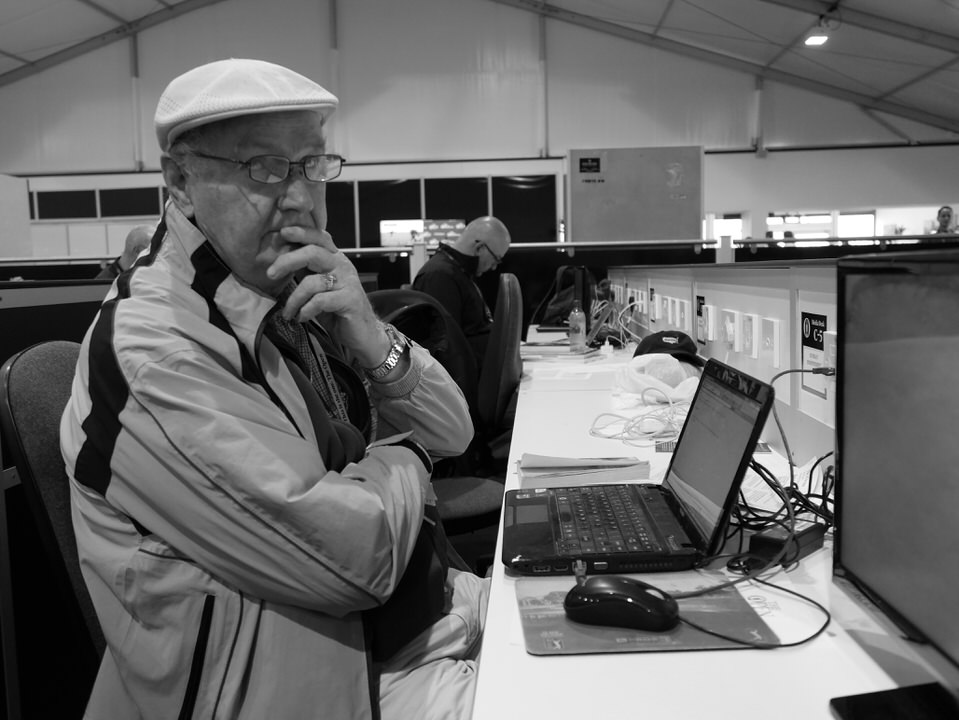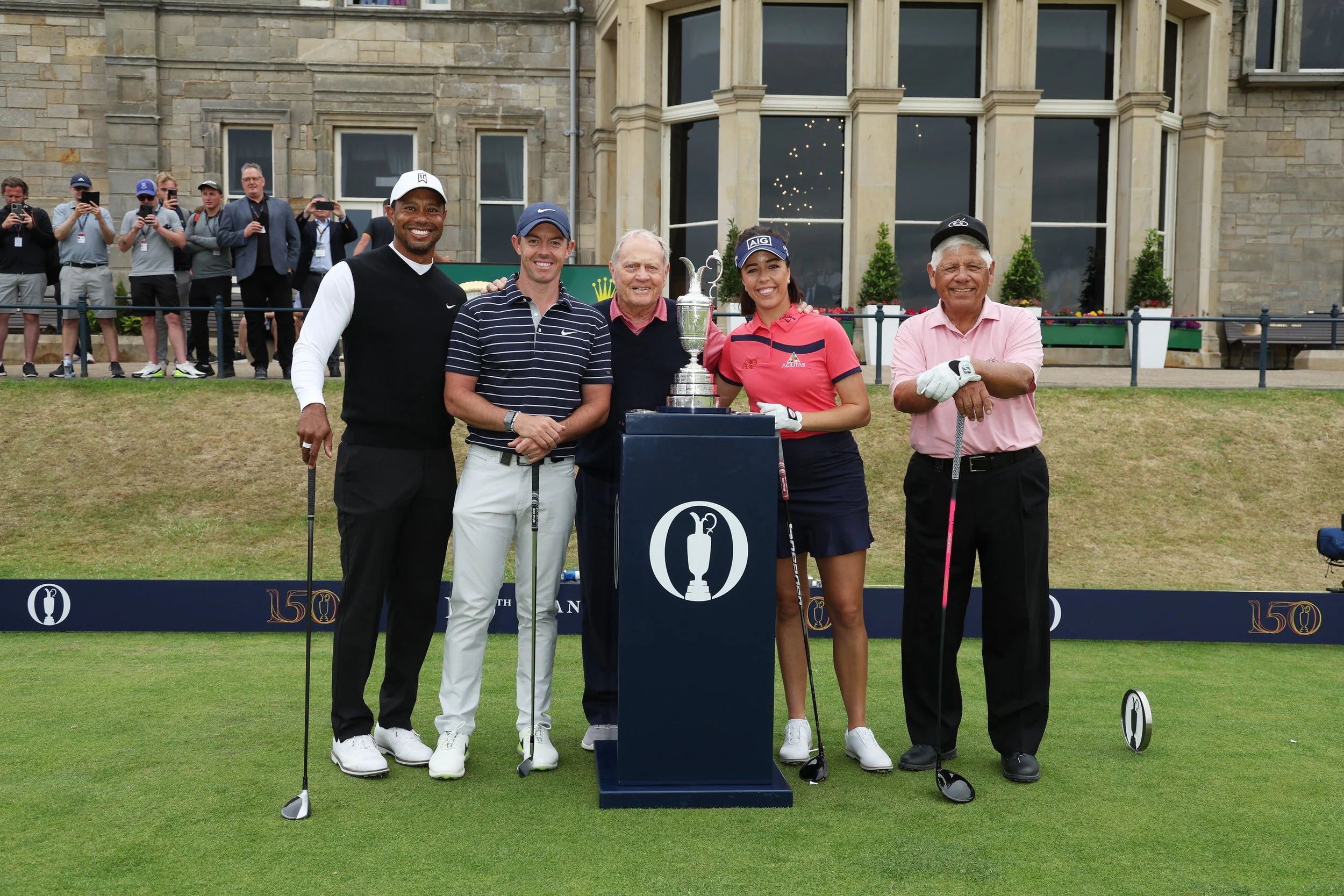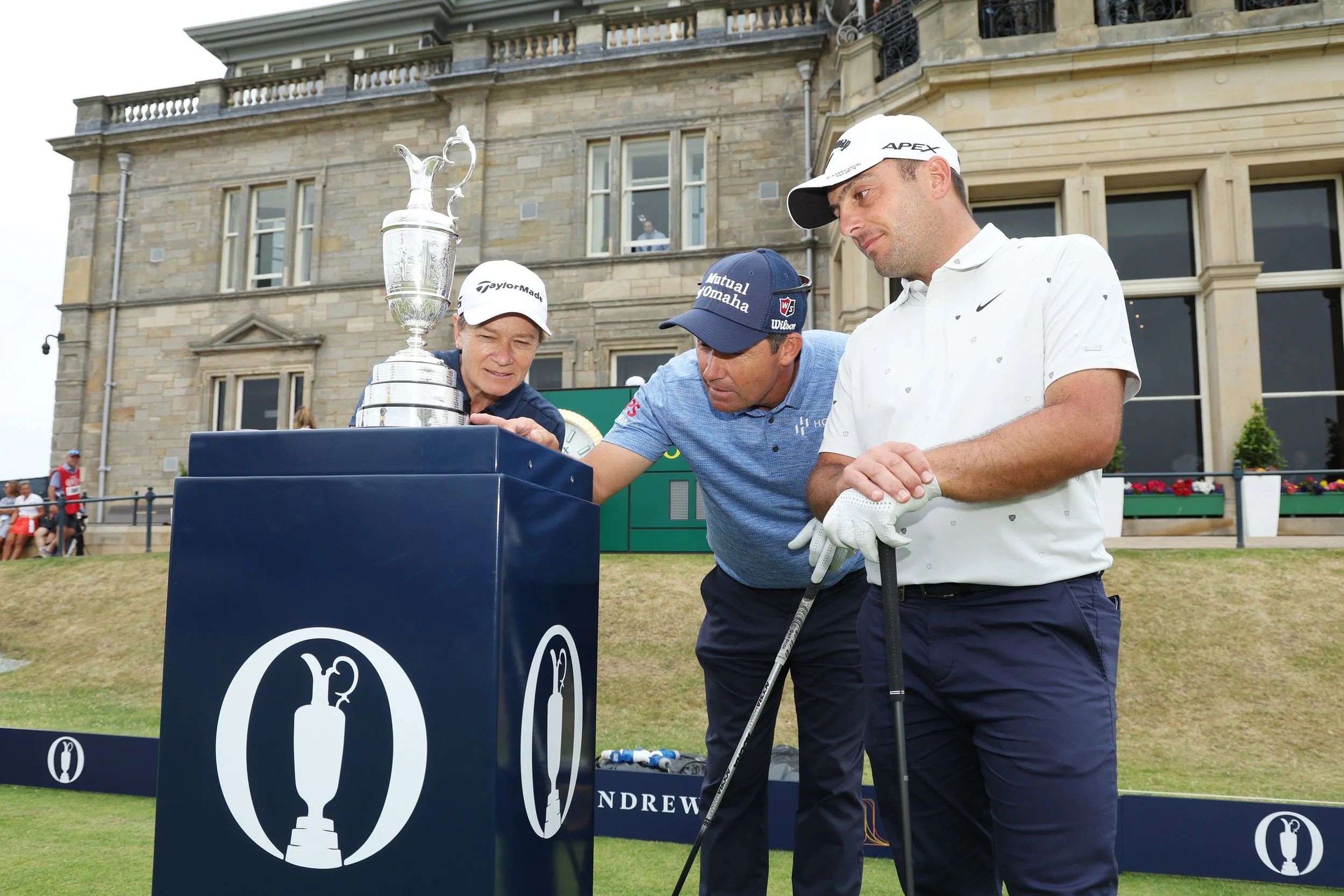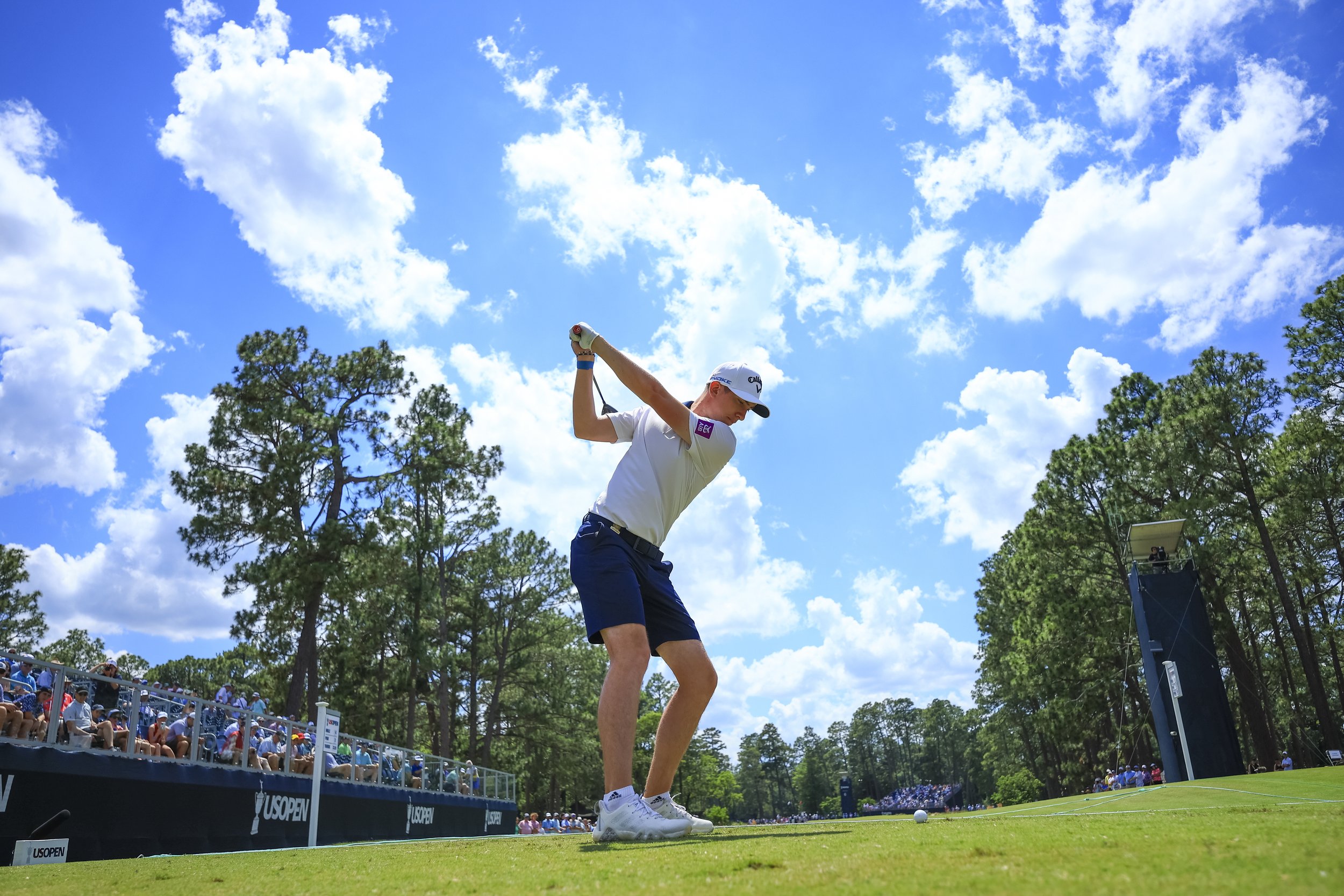New Dermot Gilleece book hits the shelves: Chasing Ladybirds: How Irish Players Scaled Golf’s Summit

Dermot Gilleece has penned a new book chronicling The Open’s remarkable players, the stand-out incidents, and how Ireland successfully scaled golf's summit.
While Fred Daly was the first Irishman to win The Open in 1947, Padraig Harrington’s 2007 victory not only bridged a 60-year gap, it also signalled a remarkable run of five Irish wins in 13 years.
The world’s oldest major golf tournament has much in common with Wimbledon, Beyoncé and Shakespeare, in the sense that a single name – The Open — is enough to gain instant recognition.
The mononymous pinnacle of professional golf is the stuff of sporting legend, complete with old ghosts, fairytale endings, and players moved to tears on winning, rather than losing.
And the story is beautifully told by Irish golf writer Gilleece in Chasing Ladybirds: How Irish Players Scaled Golf’s Summit.
The acclaimed veteran golf writer has covered countless tournaments in a remarkable 66-year journalism career. He was uniquely honoured by the Royal and Ancient at Royal Portrush this year for his coverage of 40 Open tournaments since 1980.
Set to be launched next week at Eason in the Swords Pavilions on 29 October by European Tour winner, Des Smyth, who himself tied fourth behind Tom Watson in the 1982 Open at Royal Troon, the book charts the wins, the woes, the contenders and the camaraderie; all personally witnessed, course-side, and complemented with insights and anecdotes from players and caddies, media pundits and The Open’s R&A officials.
Chasing Ladybirds is a chronicle of great sporting moments and golf’s most colourful individuals, uniquely integrating storytelling, action and ambience for a captivating read.
Irish Dominance
Ireland made its first impact on the Open Championship at Hoylake in 1913, we learn, when Royal Dublin’s Michael Moran shared third place with Harry Vardon, to earn prize money of £12 10s—a far cry from the 2025 winner’s purse of €2.65 million at Royal Portrush.
Jimmy Bruen was the leading amateur at St Andrews in 1939, with later Irish challenges brought by outstanding amateurs, including Joe Carr and Paul Dunne. So too, Cork-man Eoghan O’Connell, who, as a 19-year-old amateur in 1987, stunned the golfing world with exceptional play at North Berwick in final qualifying for the 116th Open at Muirfield.
At professional level, the first Irishman to win the coveted Claret Jug was Fred Daly, who claimed The Open Championship in 1947, at the Royal Liverpool Golf Club at Hoylake.
He and his great friend, Harry Bradshaw, blazed a trail for other Irishmen to follow, the book recounts.
In 1961, the Irish flag was flown by Christy O’Connor Snr, in a share of third place, and again, in 1965, when he was runner-up. It was a further 60 years after Daly’s triumph, however, before Pádraig Harrington recorded the second Irish victory. The Open champion of 2007, at Carnoustie, Harrington also famously retained the Open at Birkdale in 2008.
Chasing Ladybirds graphically details the notable Irish challenges through the years, and players who have achieved remarkable dominance, including Open winners Darren Clarke, Rory McIlroy and Shane Lowry, all contributing to the island’s remarkable tally of six Open Championships.
‘Dad, can we put ladybirds in the trophy?’. Three-year-old Paddy Harrington’s plea to his father, when he won the Open’s famous claret jug in 2007, is the inspiration behind Gilleece’s book title.
Following Harrington’s classic double for Irish golf, the 2011 Open at Royal St George’s was captured in style by Darren Clarke. The 2014 Open Championship, at Royal Liverpool Golf Club, belonged to Rory McIlroy, who, earlier this year, completed his elusive career Grand Slam, winning the 2025 Masters Tournament at Augusta National.
Most recently, the return of The Open to Royal Portrush in 2019 saw Shane Lowry secure a thrilling victory, playing arguably some of his best golf ever on Irish terrain, Gilleece maintains.
Other notable Irish representation at the Open also features, including Des Smyth, Christy O’Connor Jnr, Eamonn Darcy, David Jones and Ronan Rafferty, as Dermot Gilleece charts various career successes.
Classics
Of course, no story of Irish participation in The Open is complete without the telling of Harry Bradshaw’s infamous ball-in-the-bottle incident in 1949, at Royal St George’s. The Delgany golfer lost the 1949 Open in a playoff against South African Bobby Locke, after his ball lodged in an upturned, broken Guinness bottle, and he was forced to play the shot.
Dermot Gilleece during one of his many Open Championship assignments. Picture © Brian Keogh
The notion of an Irishman being undone by a Guinness bottle was more than the nation could bear, it seems. Gilleece paints a colourful portrait of the Wicklow player’s remarkable career achievements, and, we are told, The Brad did eventually come to laugh over his misfortune, which, ironically, added to his legendary status in the game.
The iconic golf tournament, which only one Covid pandemic and two World Wars have managed to disrupt since 1860, was first televised in 1955 at St Andrews. A single camera moved between the first nine and the 18th green, showing intermittent play. Sky, eat your heart out!
Gilleece also documents an unfortunate Irish connection, in that the claret jug plinth carries just one spelling error, where Fred Daly’s name, engraved as the 1947 winner, sees the venue spelt ‘Holylake’, instead of Hoylake.
Chasing Ladybirds has inside stories about the Open’s great venues from this most knowledgeable observer, including the legendary courses of Carnoustie, Royal Portrush in County Antrim, and St Andrews, where George Duncan, the 1920 Open champion, noted, ‘You can play a damned good shot and find it in a damned bad place.’
Speculation about a next Irish staging of the Open taking place south of the border, at Portmarnock in Dublin, is also assessed, looking at the practical golfing and course considerations alongside the massive economic opportunity it represents for a small golfing nation.
International Champions
The wit and wisdom and spectacular play of the international golfing champions is chronicled, giving context to Irish accomplishments. We hear of the track record of legends, including Jack Nicklaus, Sandy Lyle, Mark O’Meara, Tiger Woods, Justin Leonard, Lee Trevino, Seve Ballesteros and Tom Watson, and many more who graced the game’s links courses with distinction.
Arnold Palmer, the popular king of golf, claimed the Claret jug twice, in back-to-back wins at Royal Birkdale in 1961 and at Troon in 1962. Also, Gary Player, who famously won The Open in three different decades, first as a 23-year-old, in 1959, at Muirfield.
Ben Hogan made his victorious trip to the 1953 Open at Carnoustie, we are told, because of the 1946 champion, Sam Snead, who persuaded his friend that he couldn’t expect to be rated in the top rank among players without The Open on his CV.
Then there is the hapless Frenchman, Jean Van de Velde, who lost to Scotland’s Paul Lawrie at the 1999 Open Championship at Carnoustie, crashing from his three-stroke lead driving off the 18th. He squandered his chance of victory with a disastrous triple bogey on the hole, during which he famously waded into the Barry Burn water hazard, in an effort to play a shot.
Think of a favourite Open memory, individual or occasion, and it’s all here; knowledgeably recounted by one of Ireland’s great chroniclers of the game, whose coverage of this golfing major has been one of his lifetime’s passions.
The Irish Way
In the foreword to Chasing Ladybirds by Dr Bob Rotella, the mind guru to many leading Irish and international players, tries to explain Irish golfing success.
Perhaps Ireland has the right environment and weather, which forces you to become a more complete golfer, he says.
“Forget California, where the temperature is 80 degrees, there’s no wind, and the grass is perfect. Too many players are trying to make golf a neat, over-controlled game. The Irish are always challenged, having contests, playing the worst lie, downhill, uphill. They’re not trying to hit it straight; they’re playing the Irish way.”
‘Chasing Ladybirds; How Irish Players Scaled Golf’s Summit’ published by Red Stripe Press is available to buy now in Eason and all major bookstores, priced at €19.99/£16.99.














